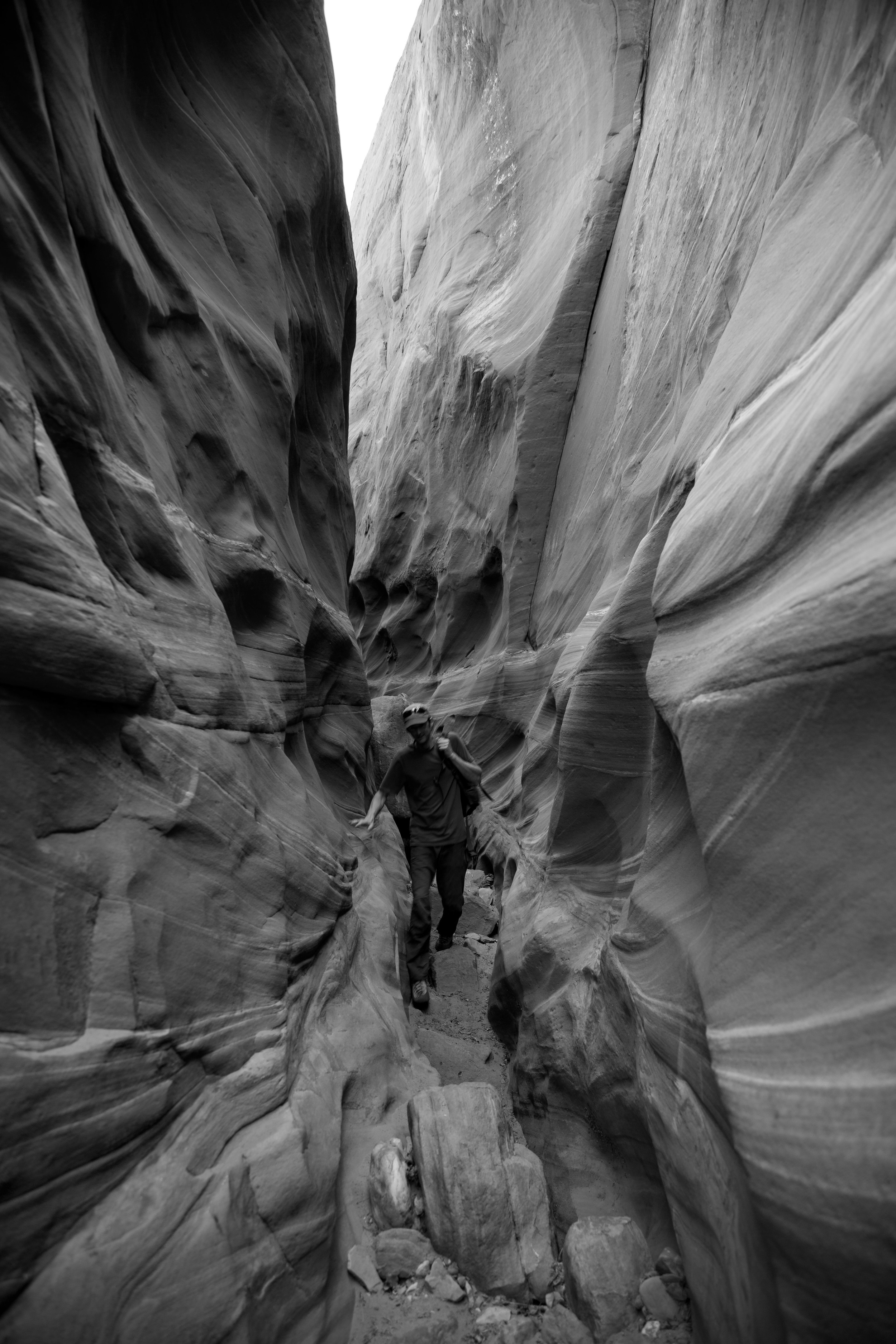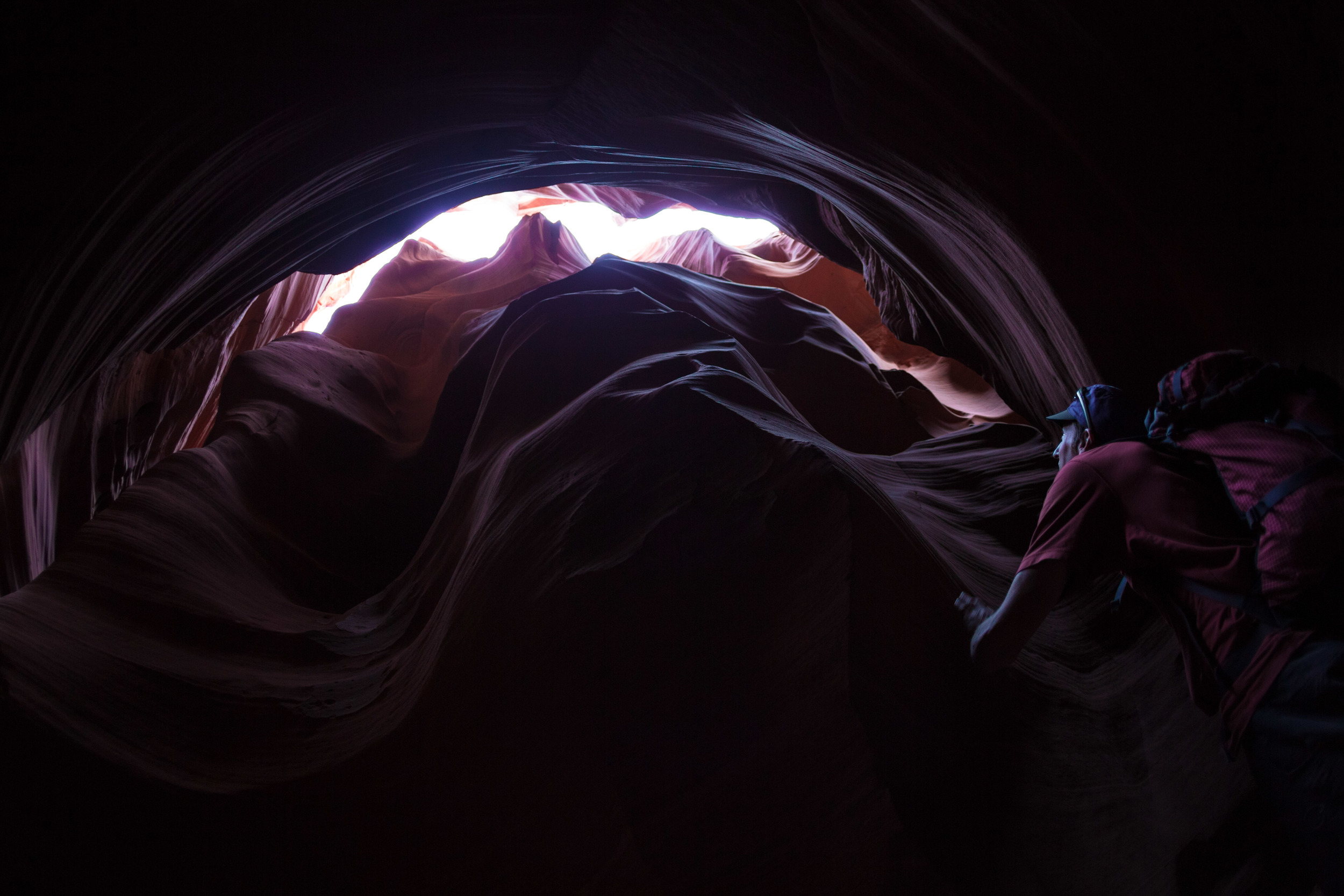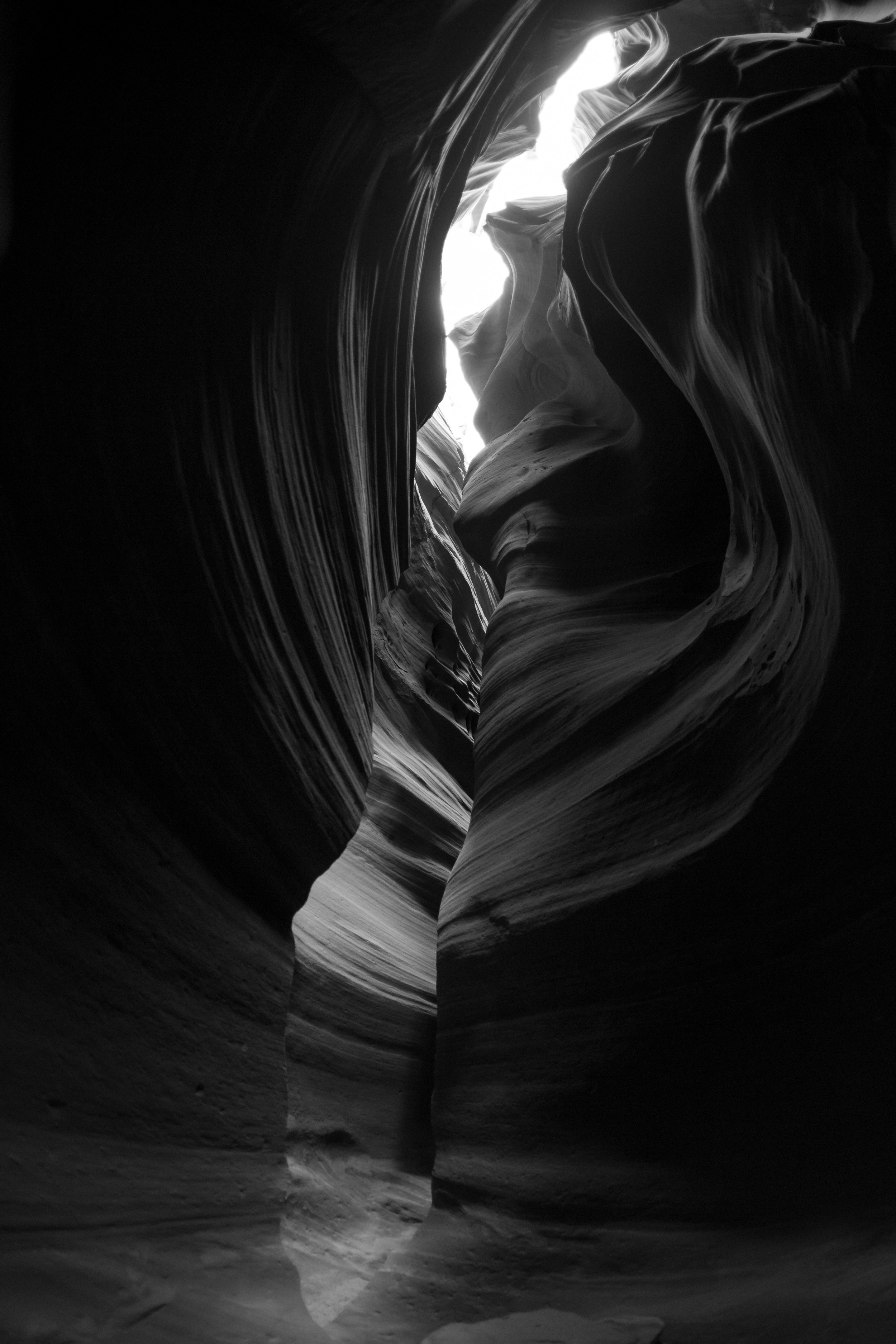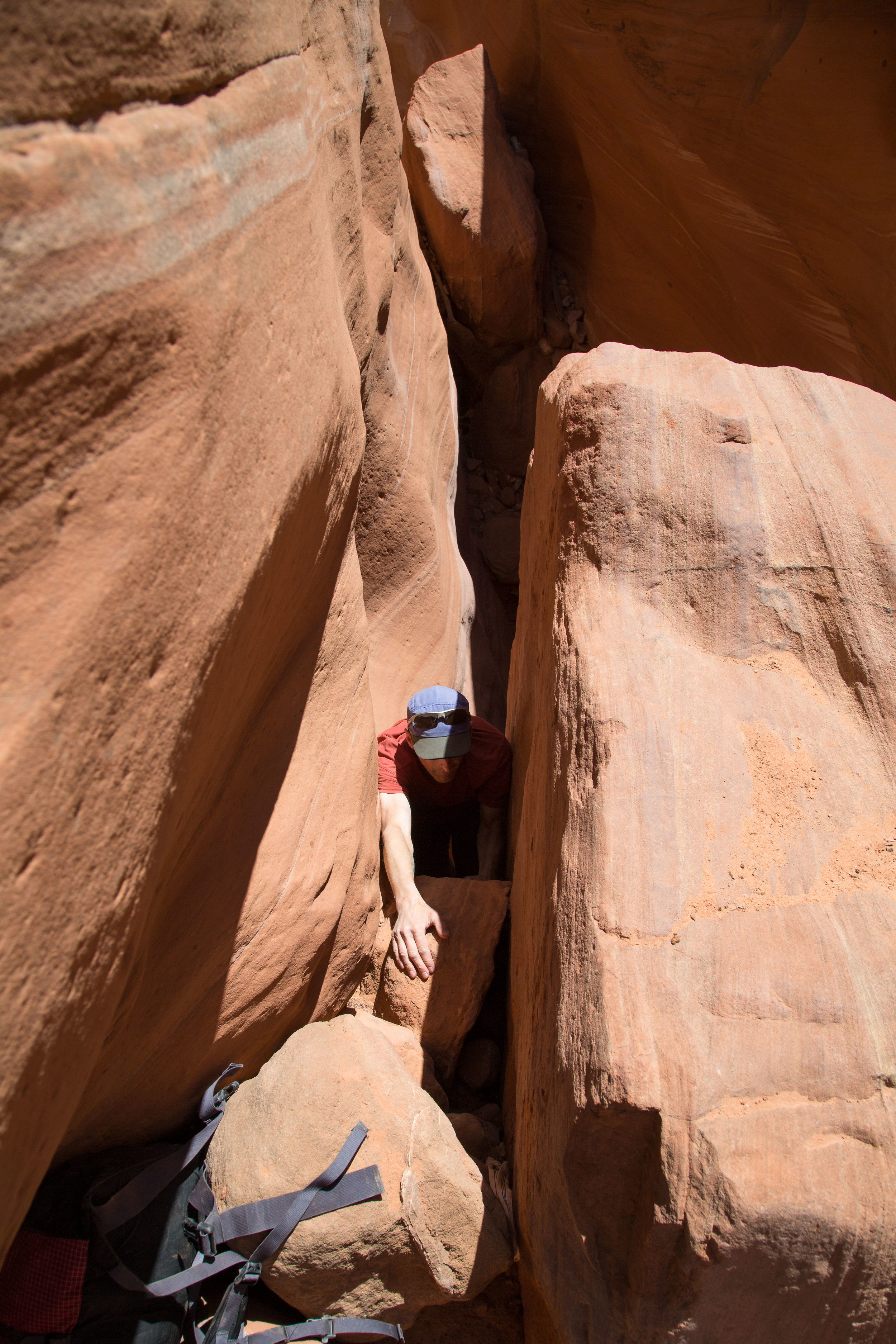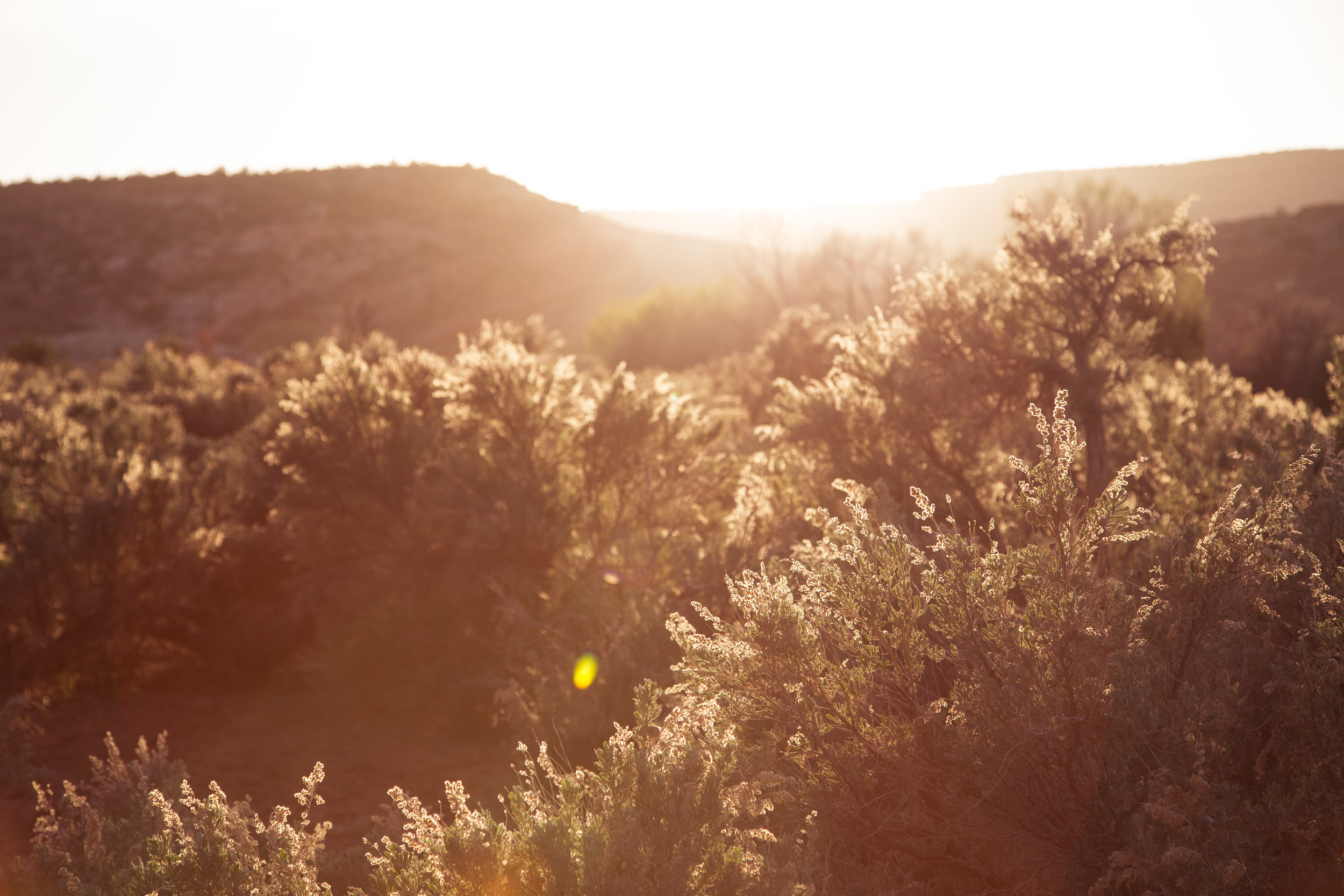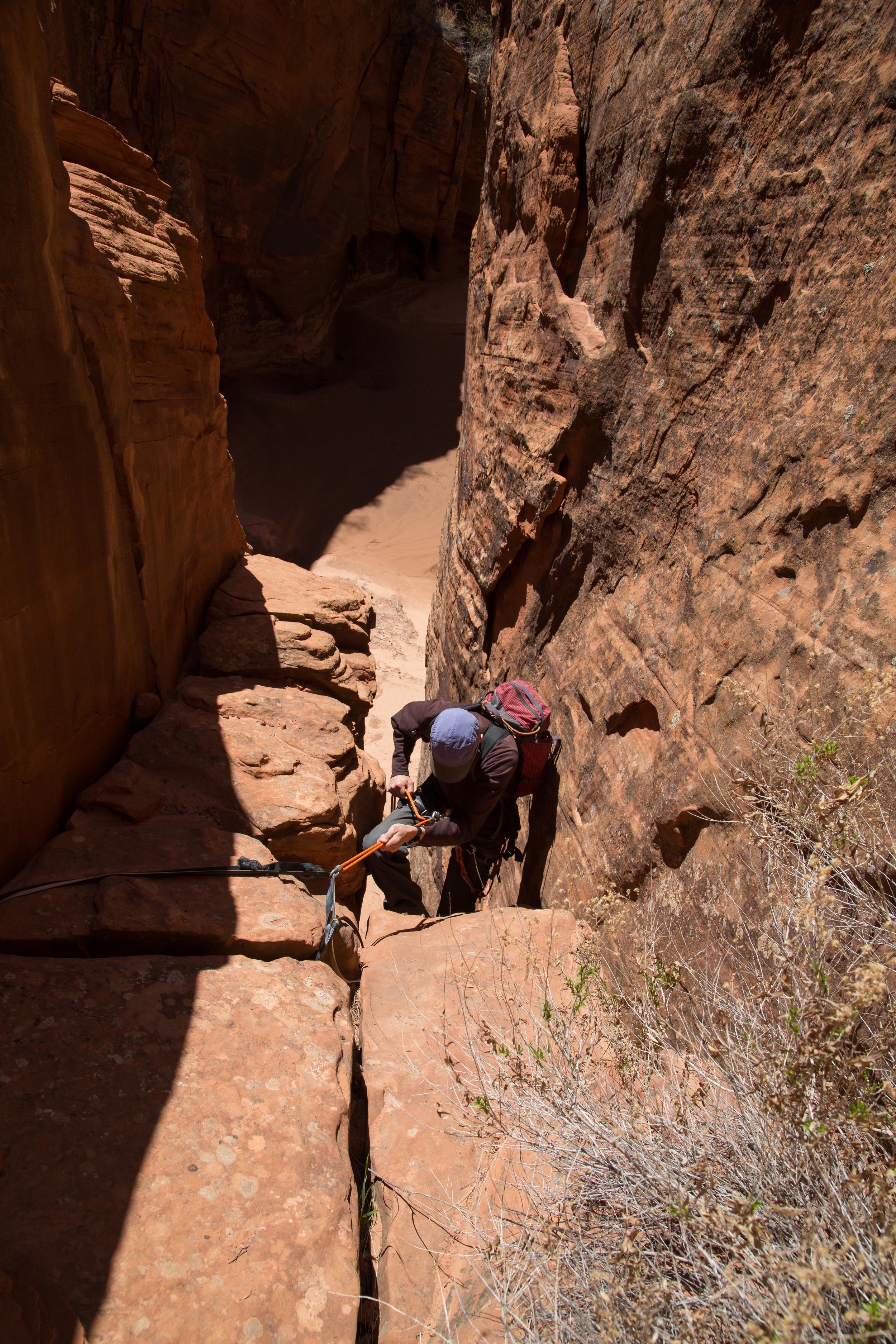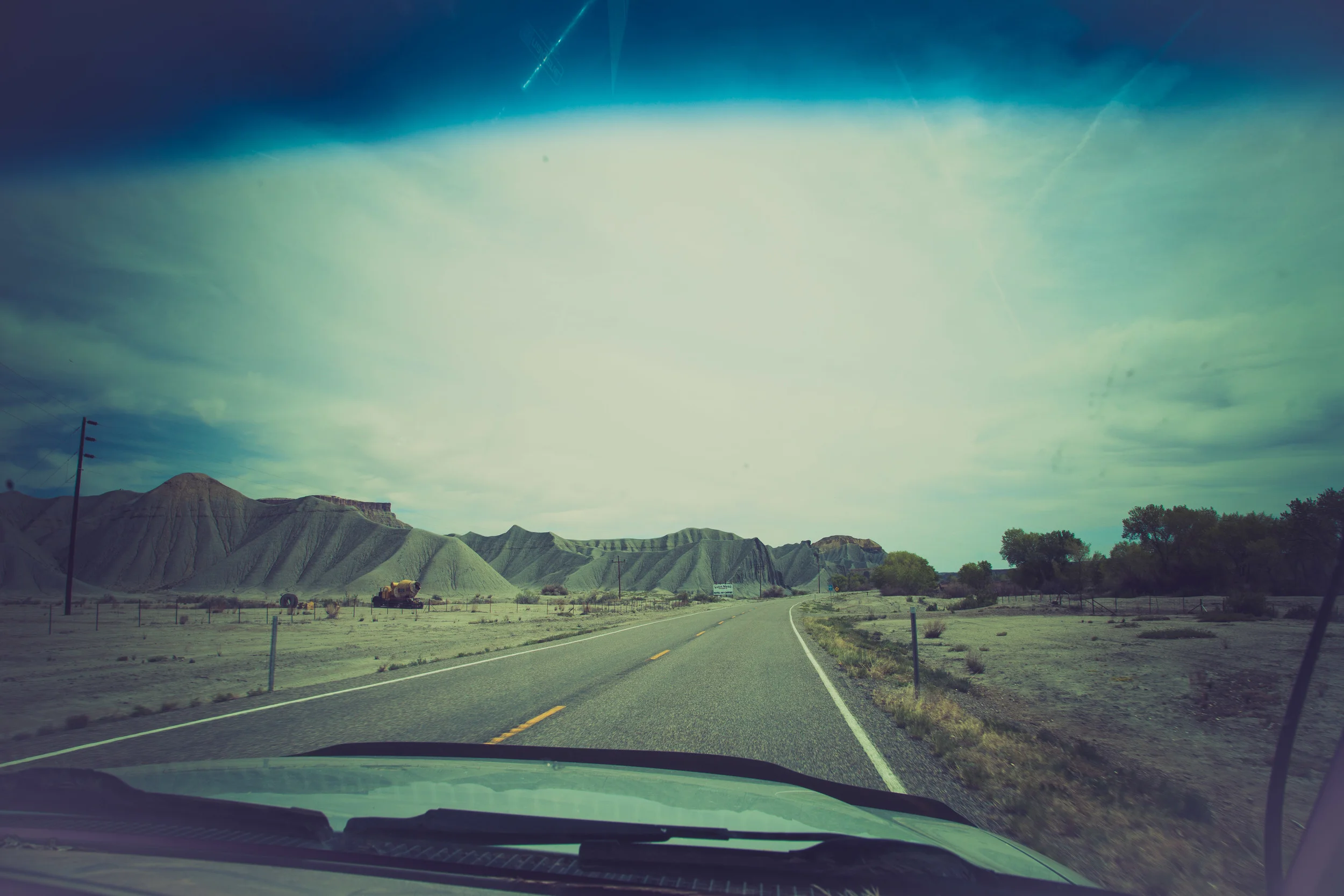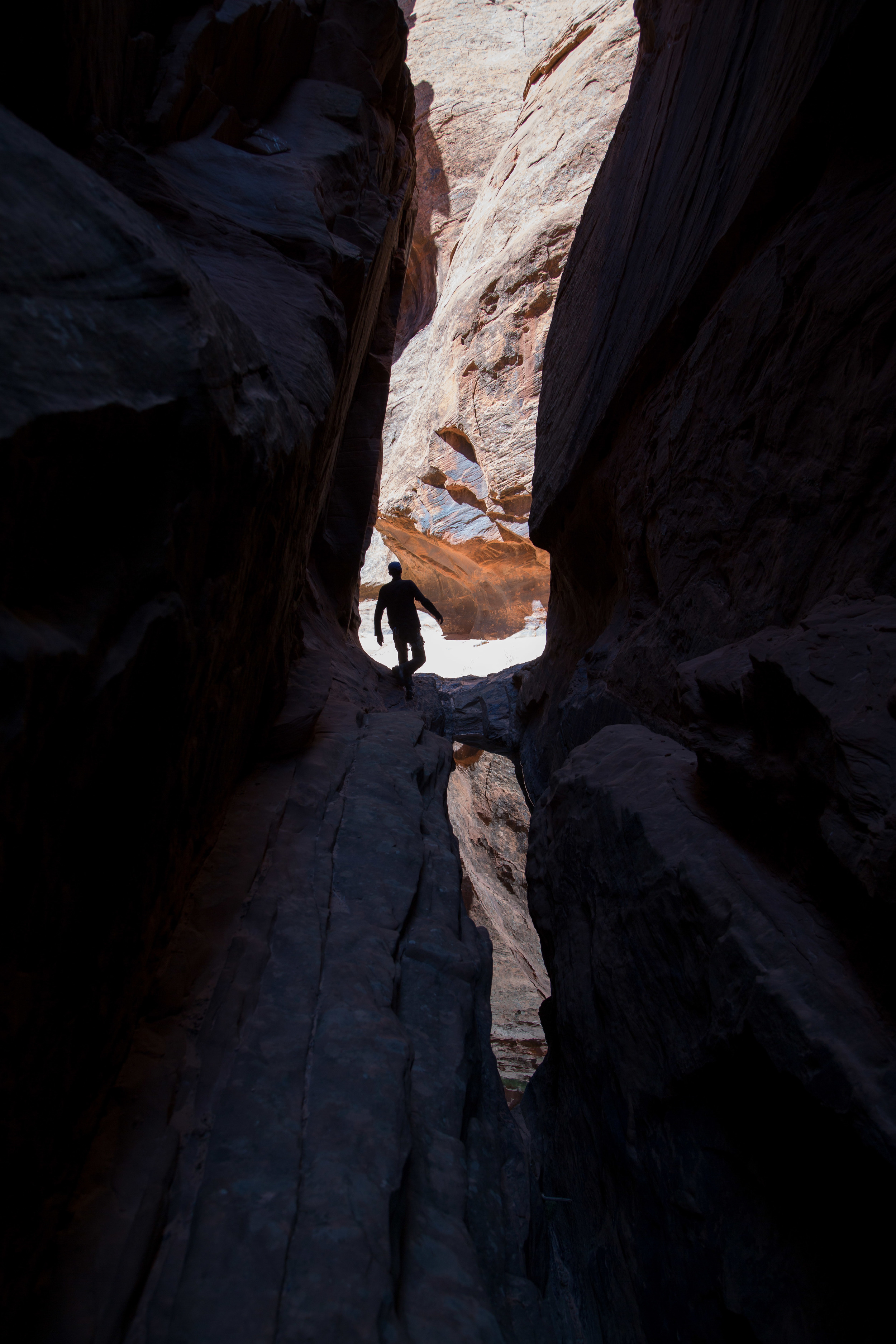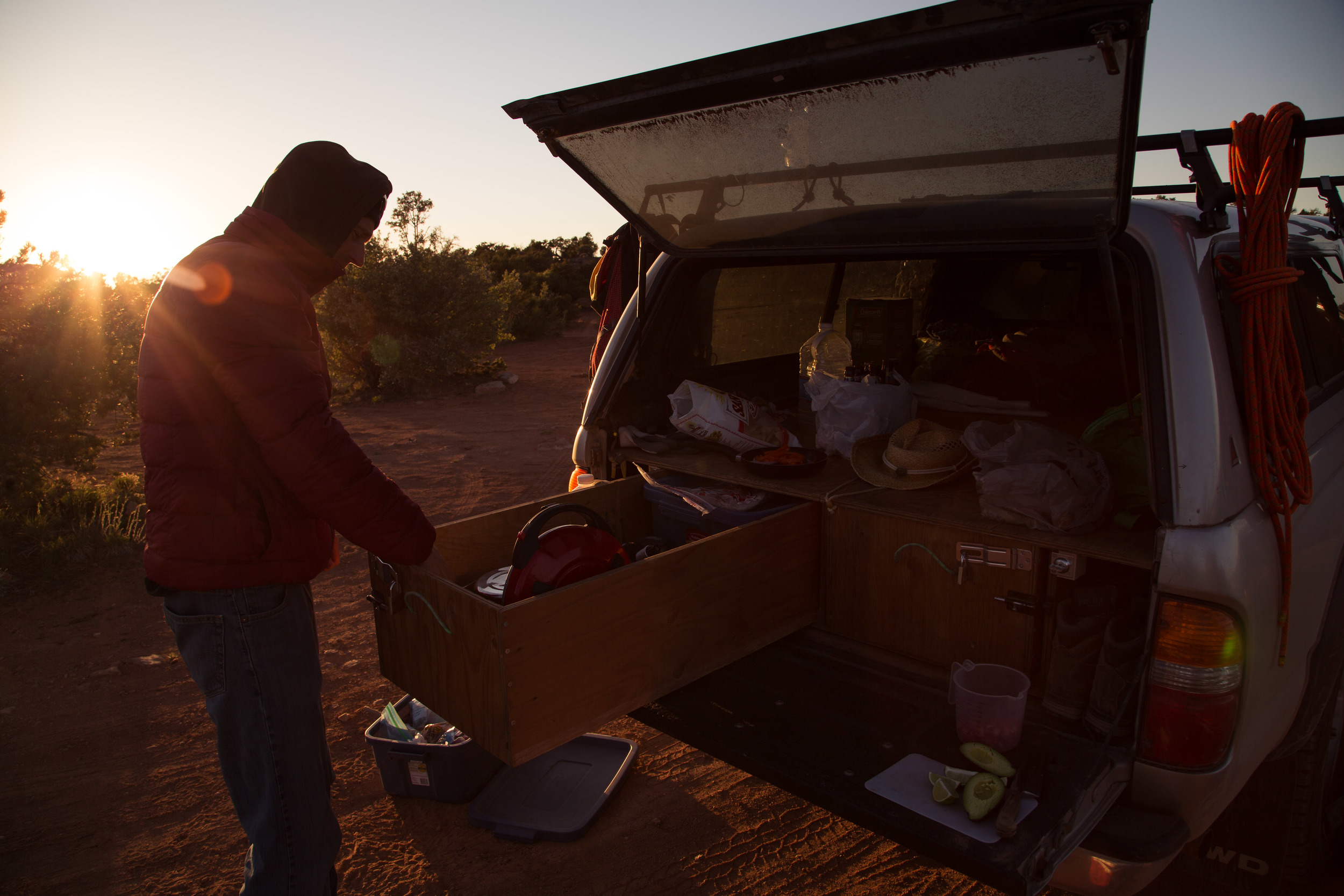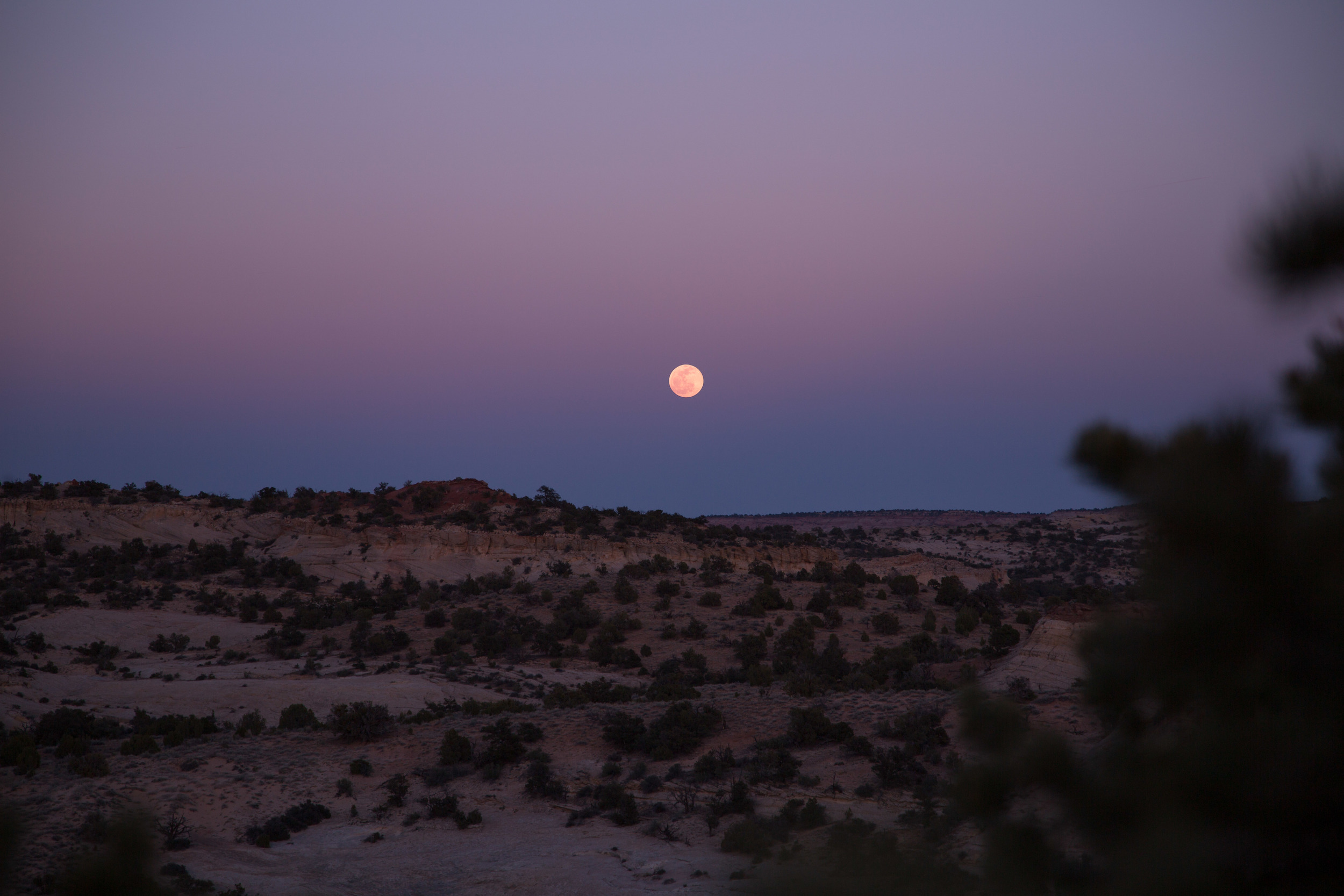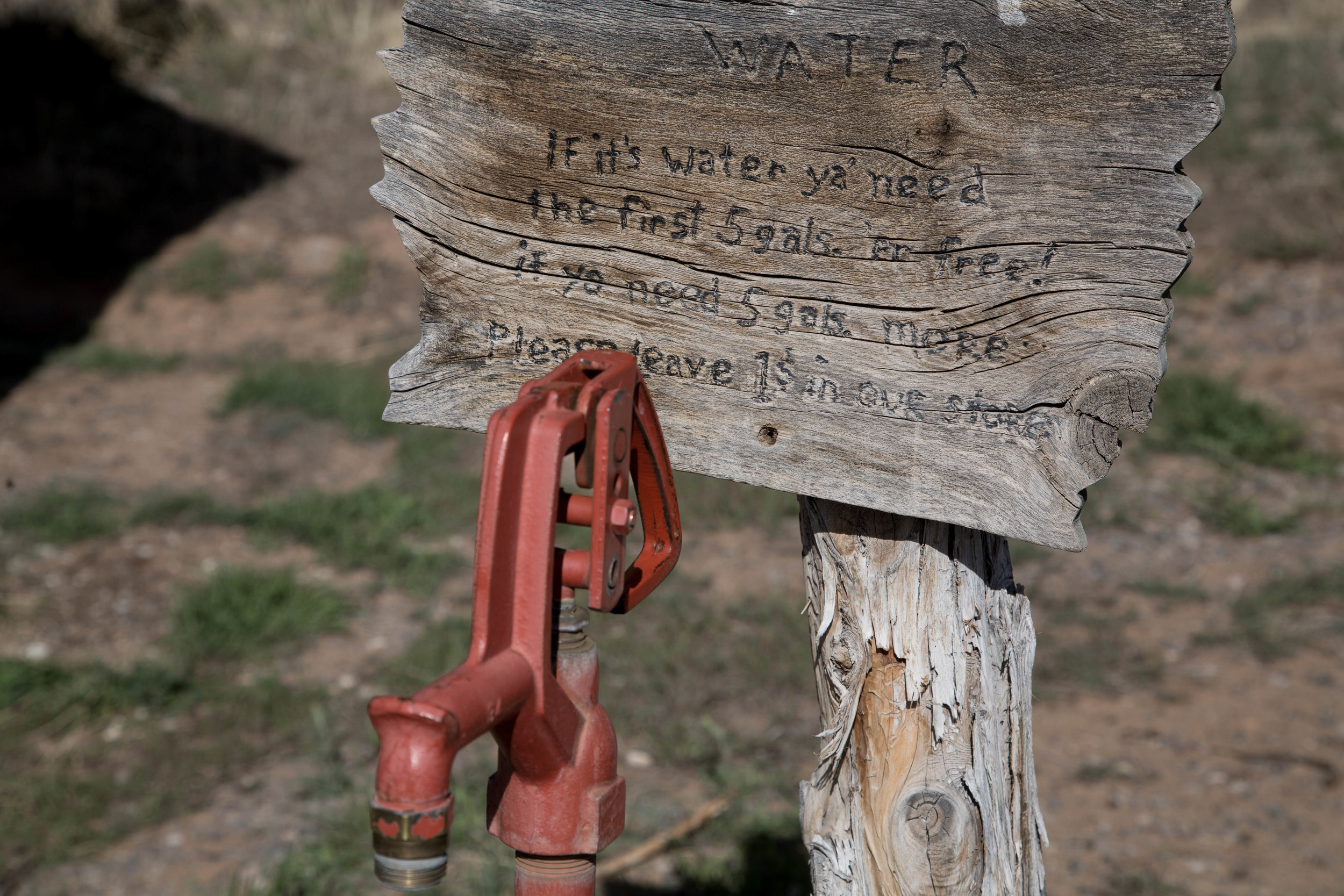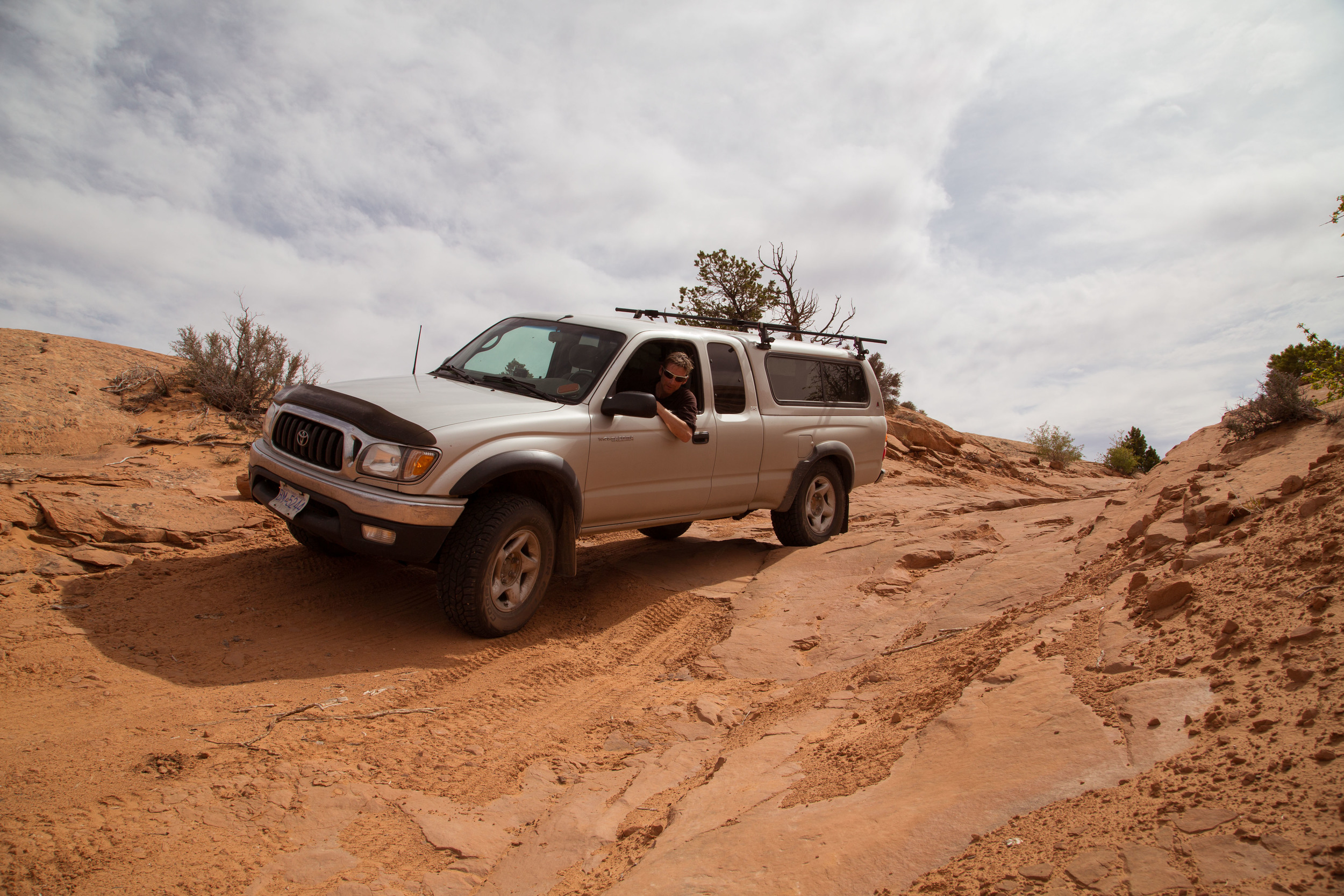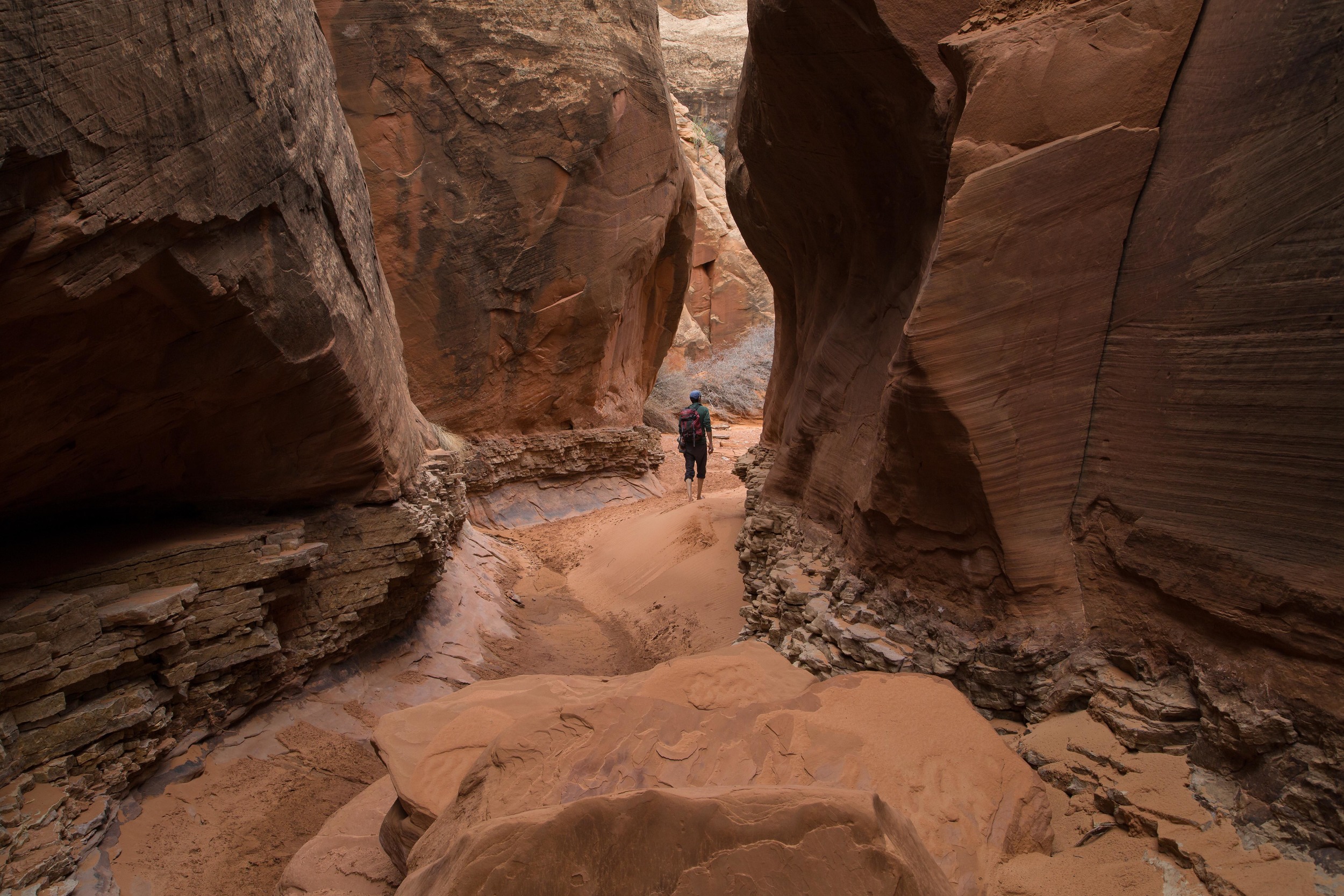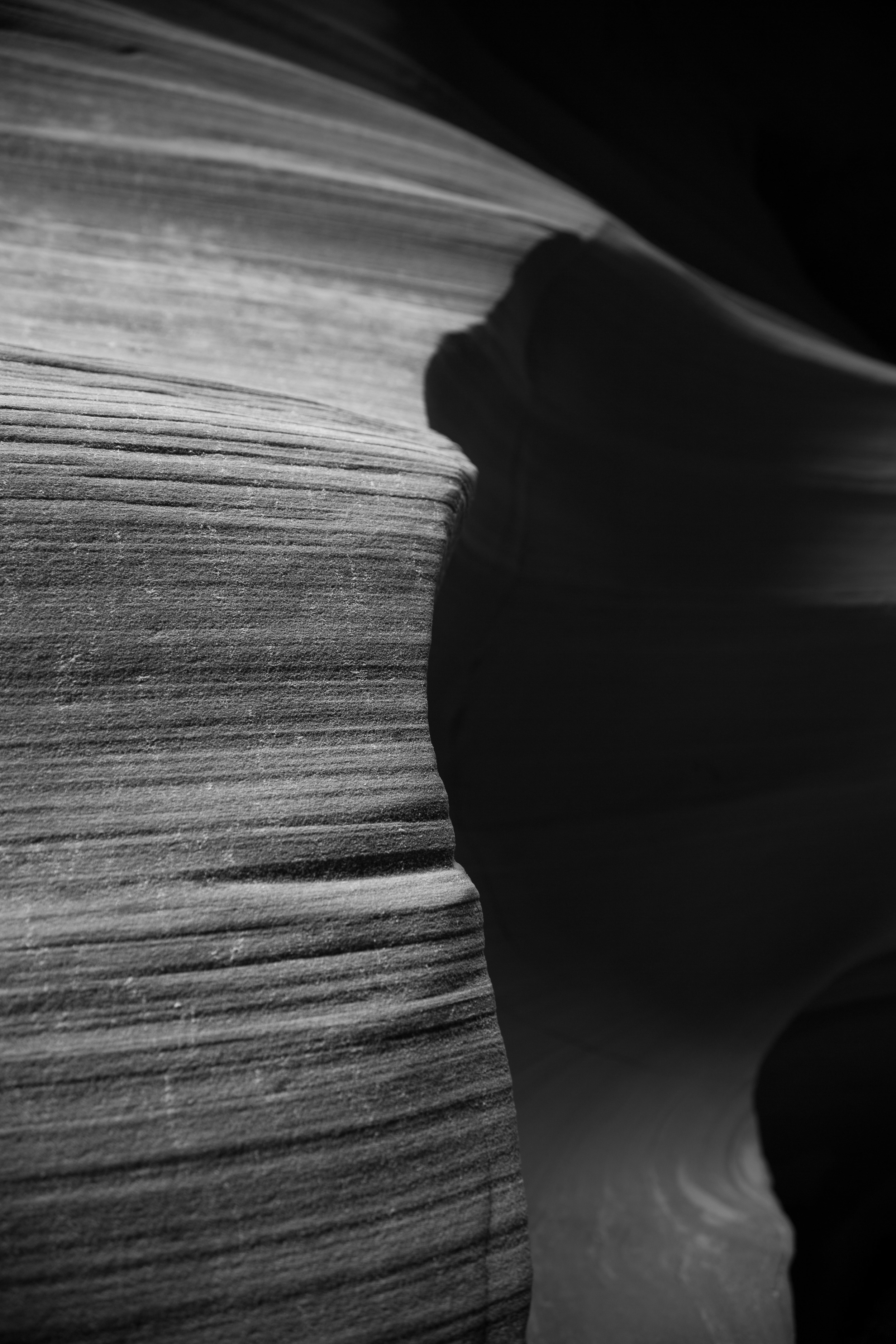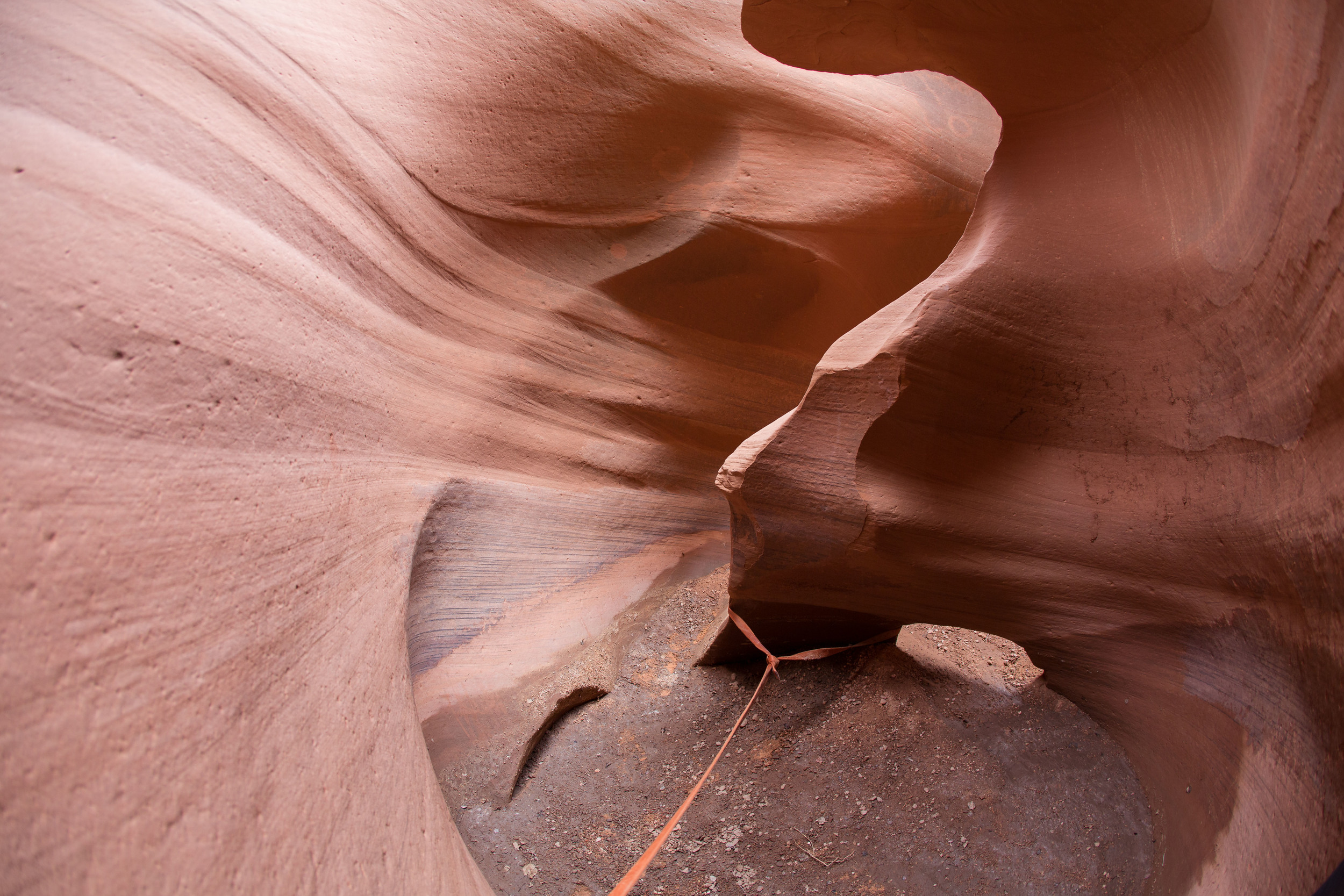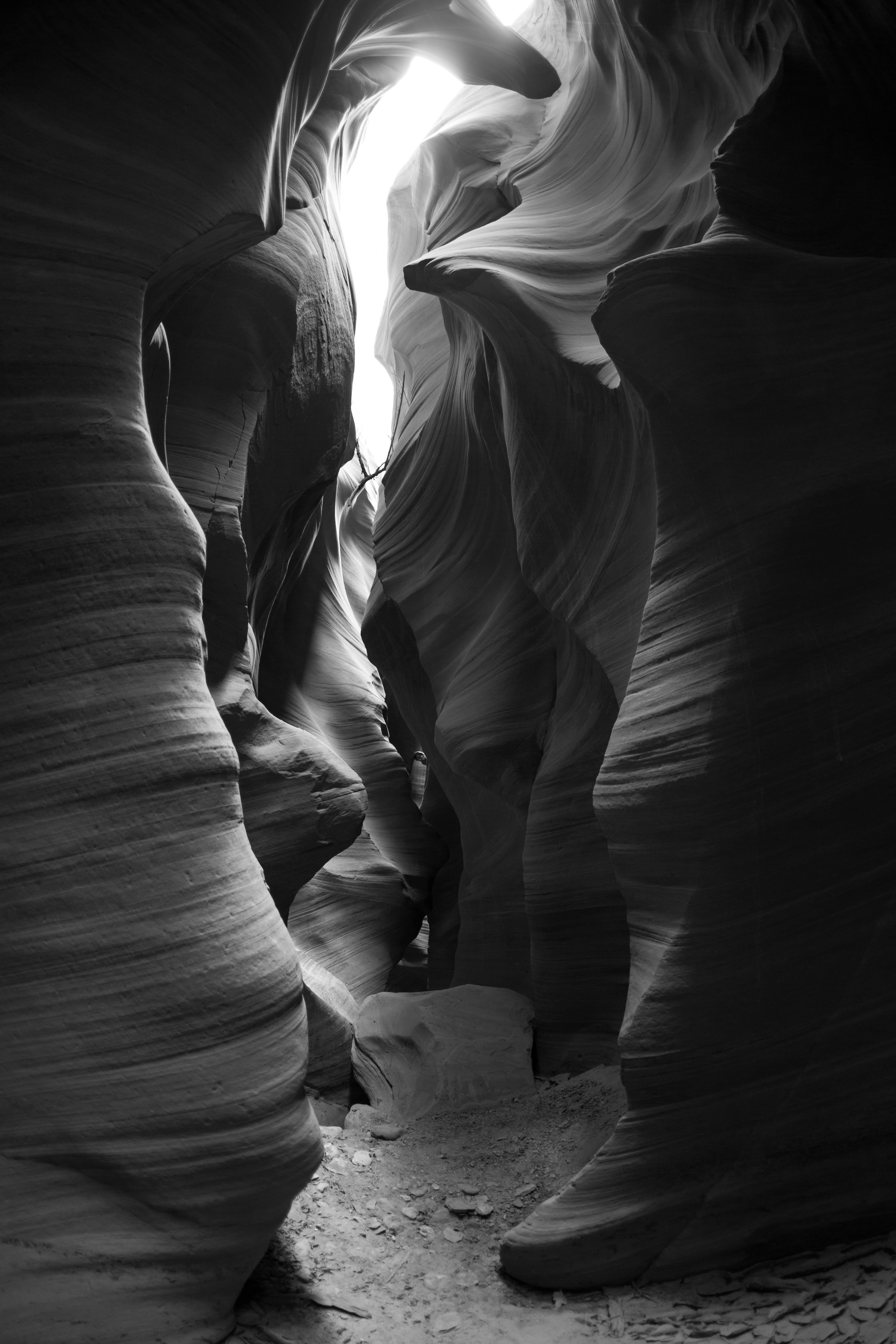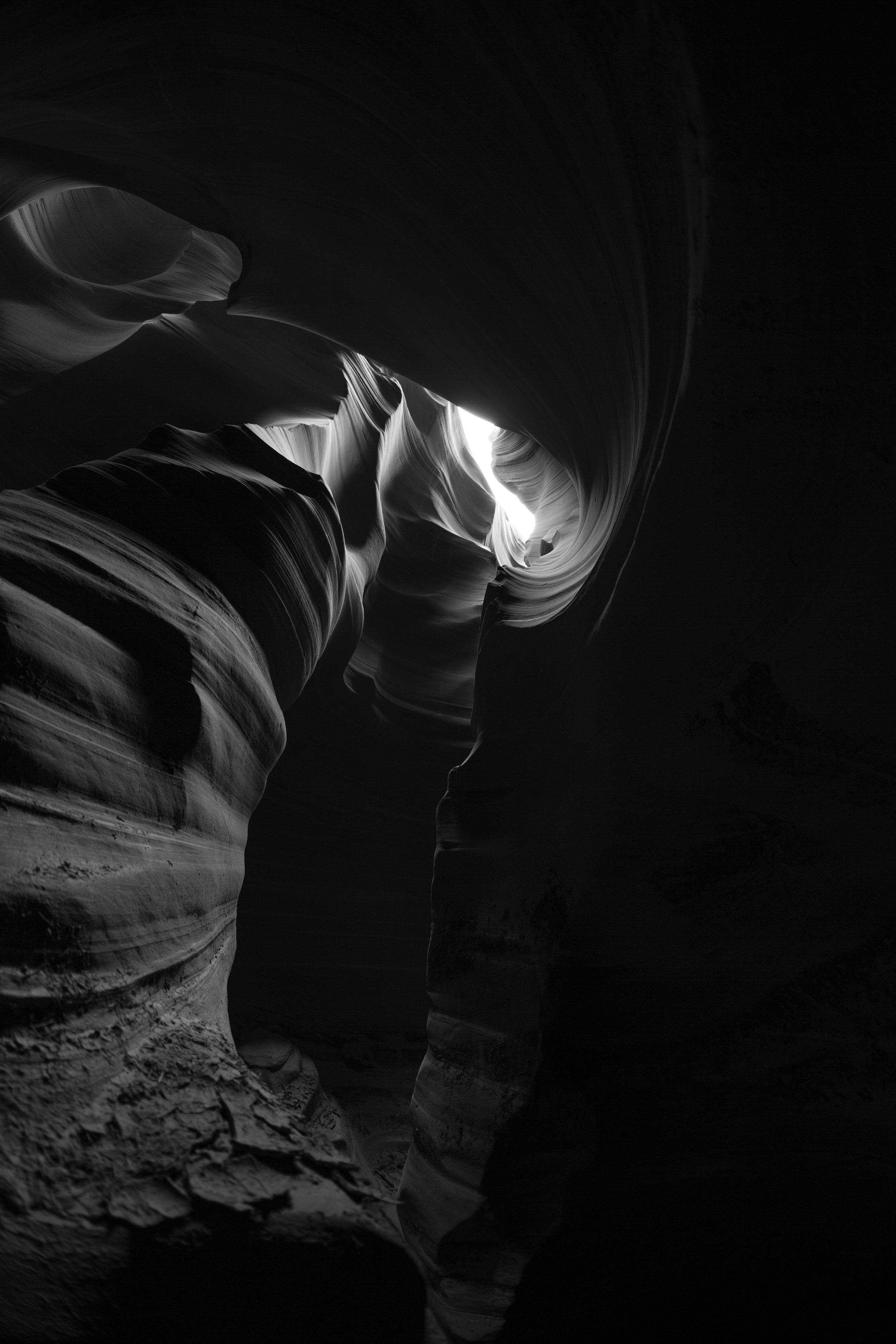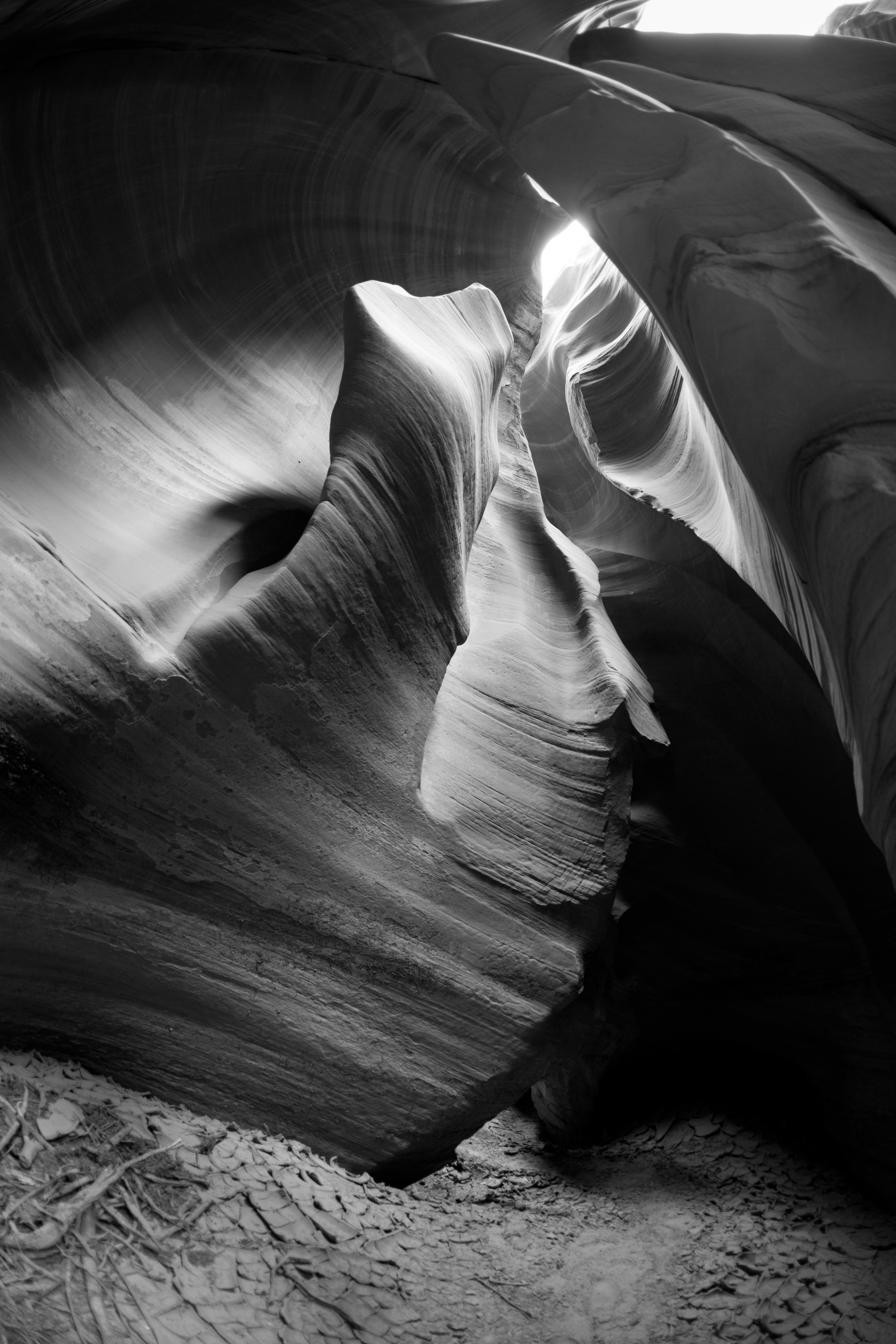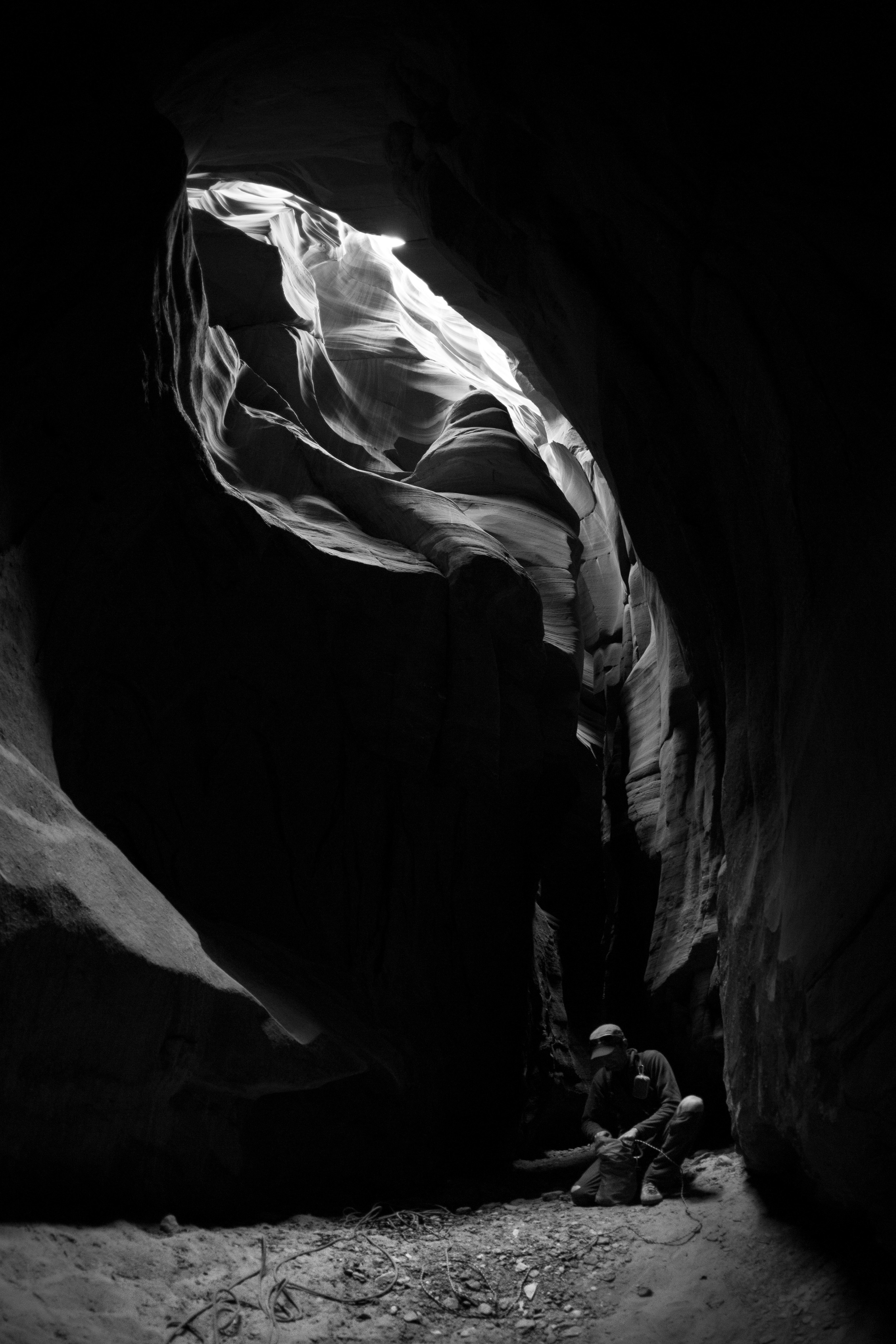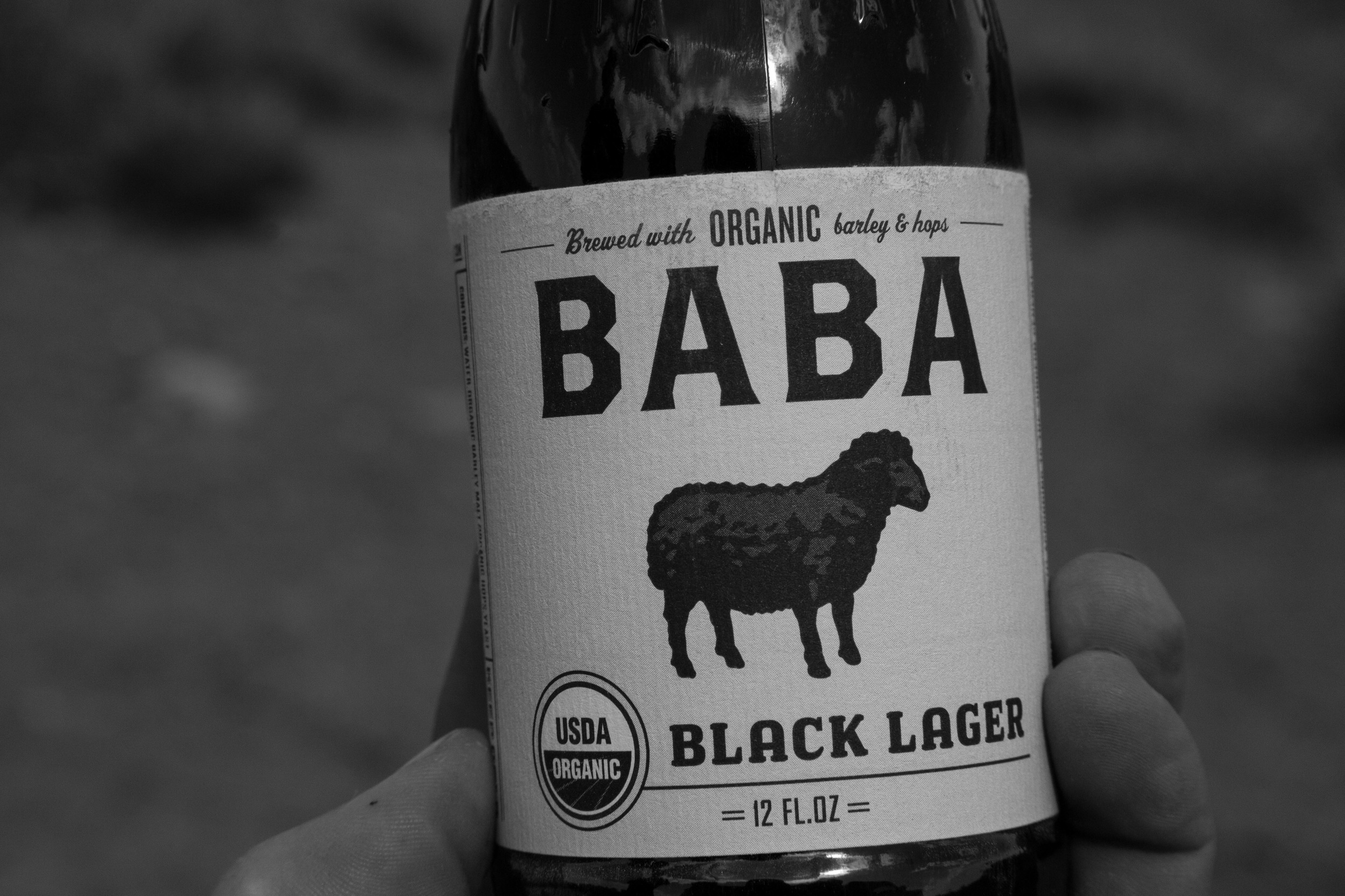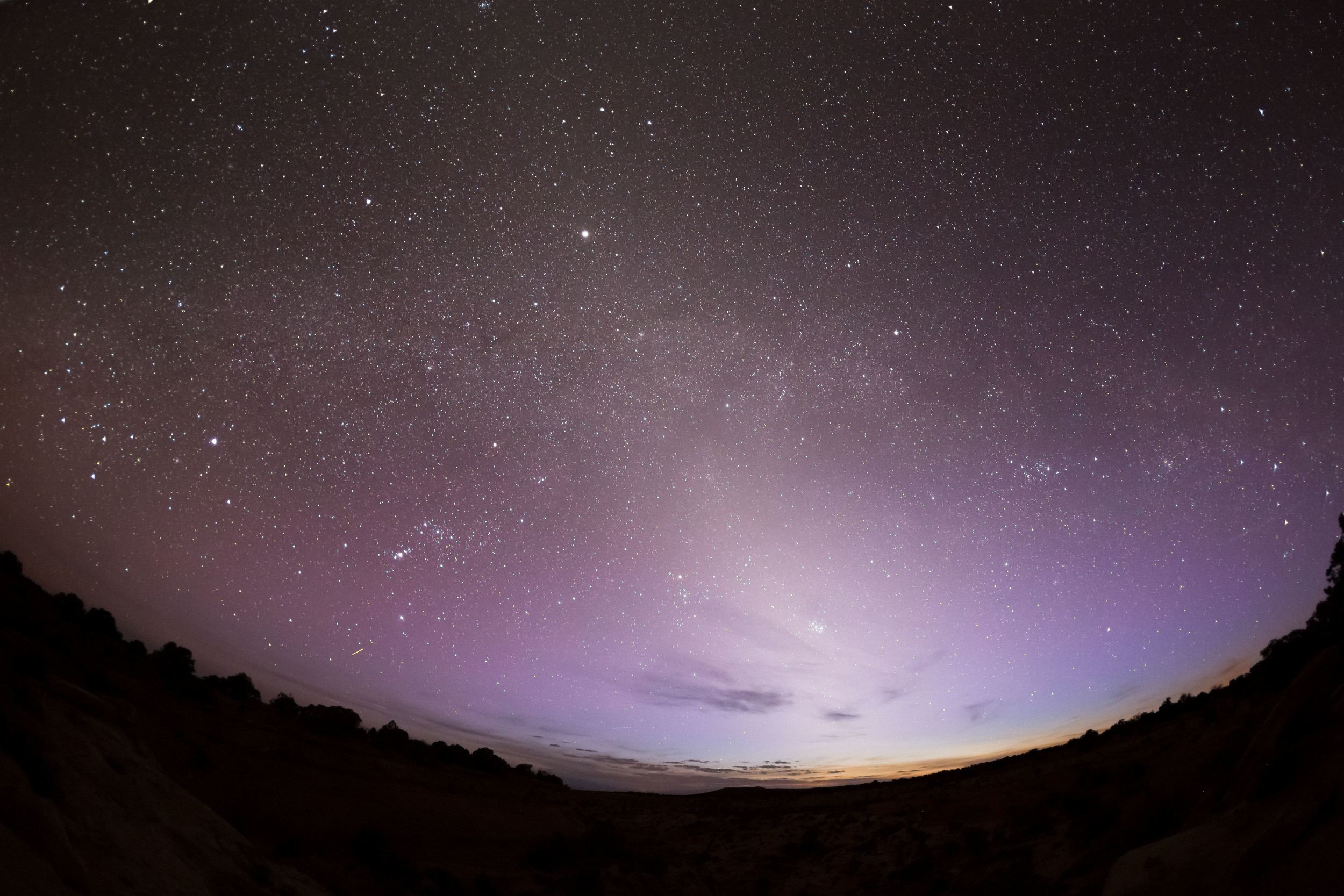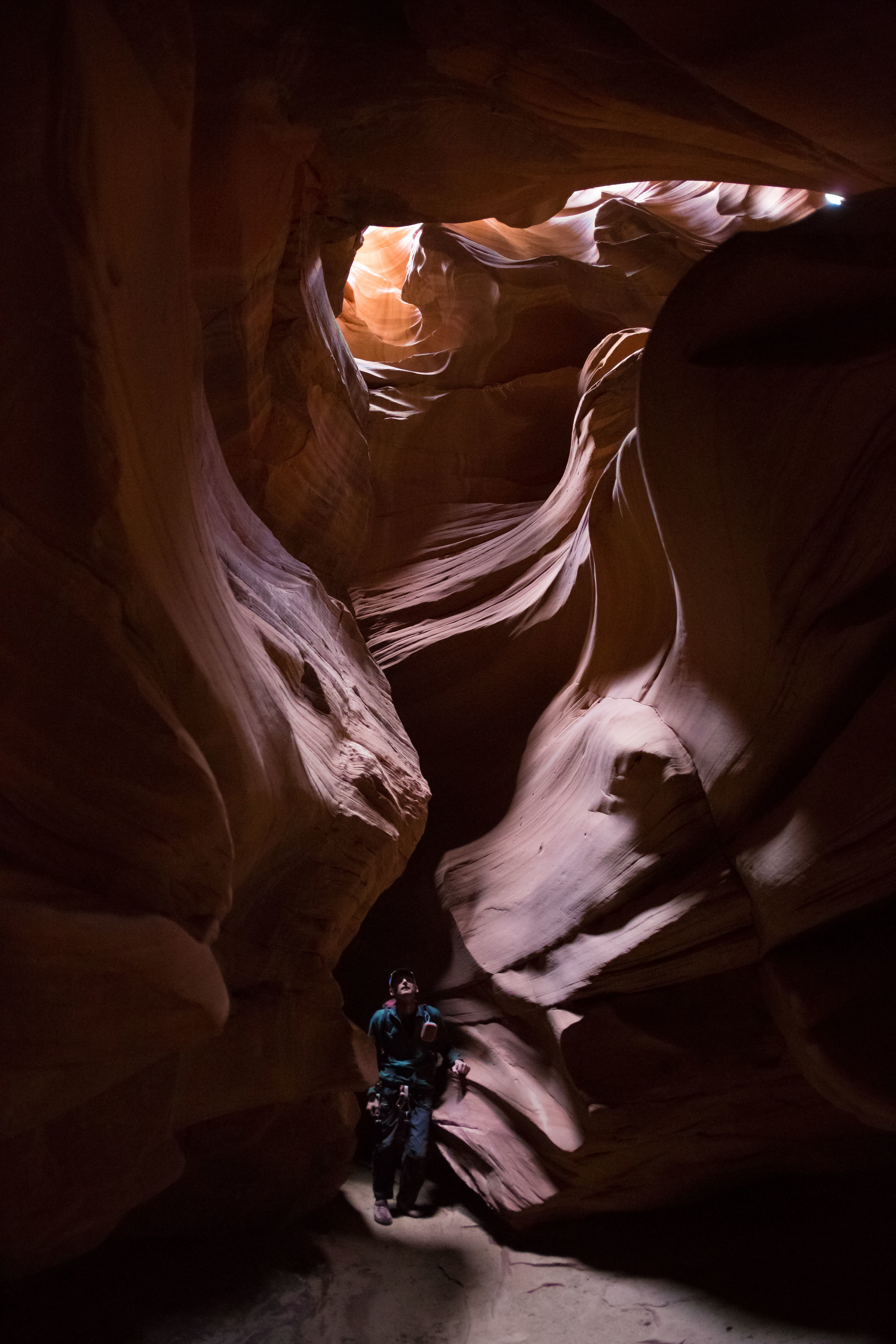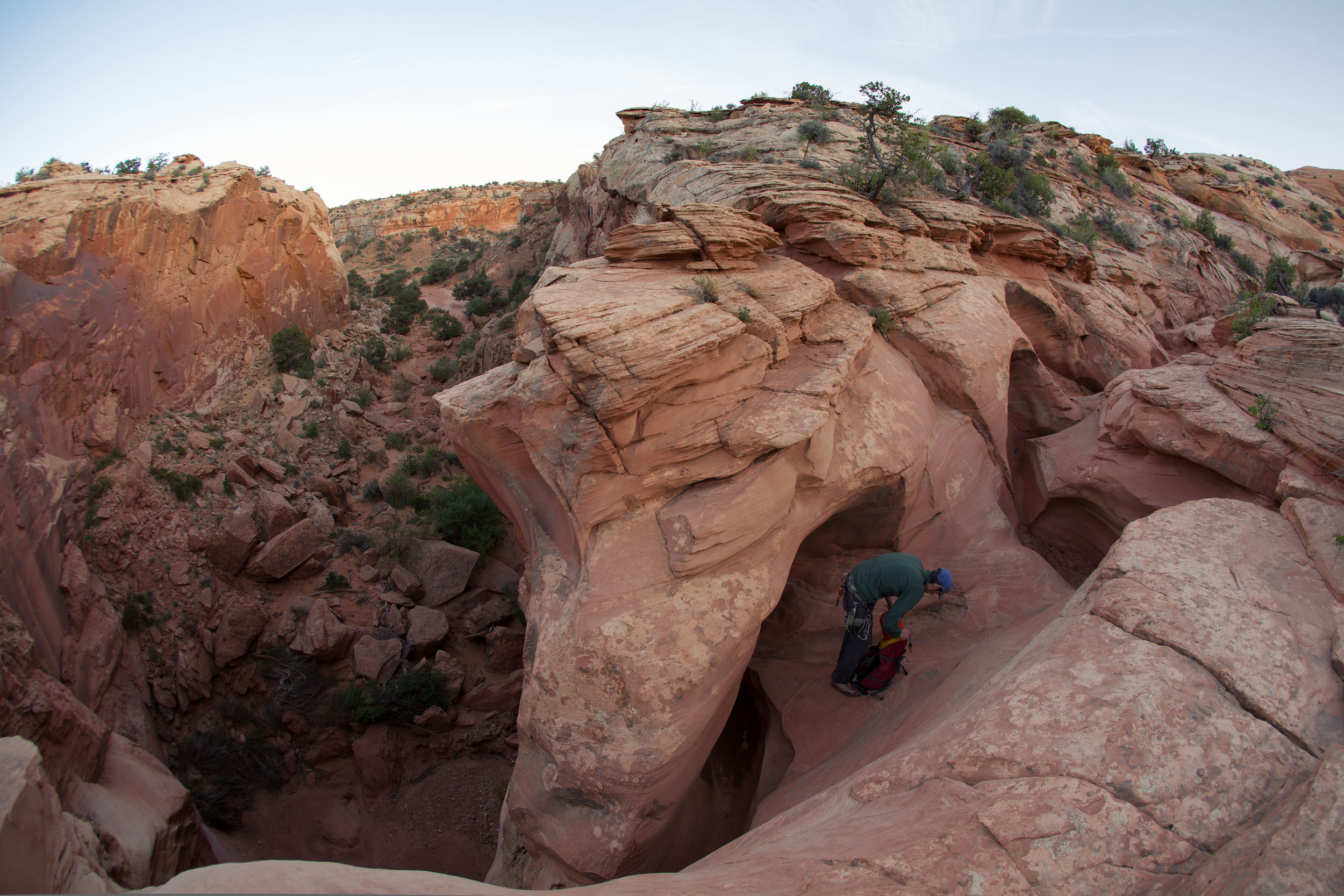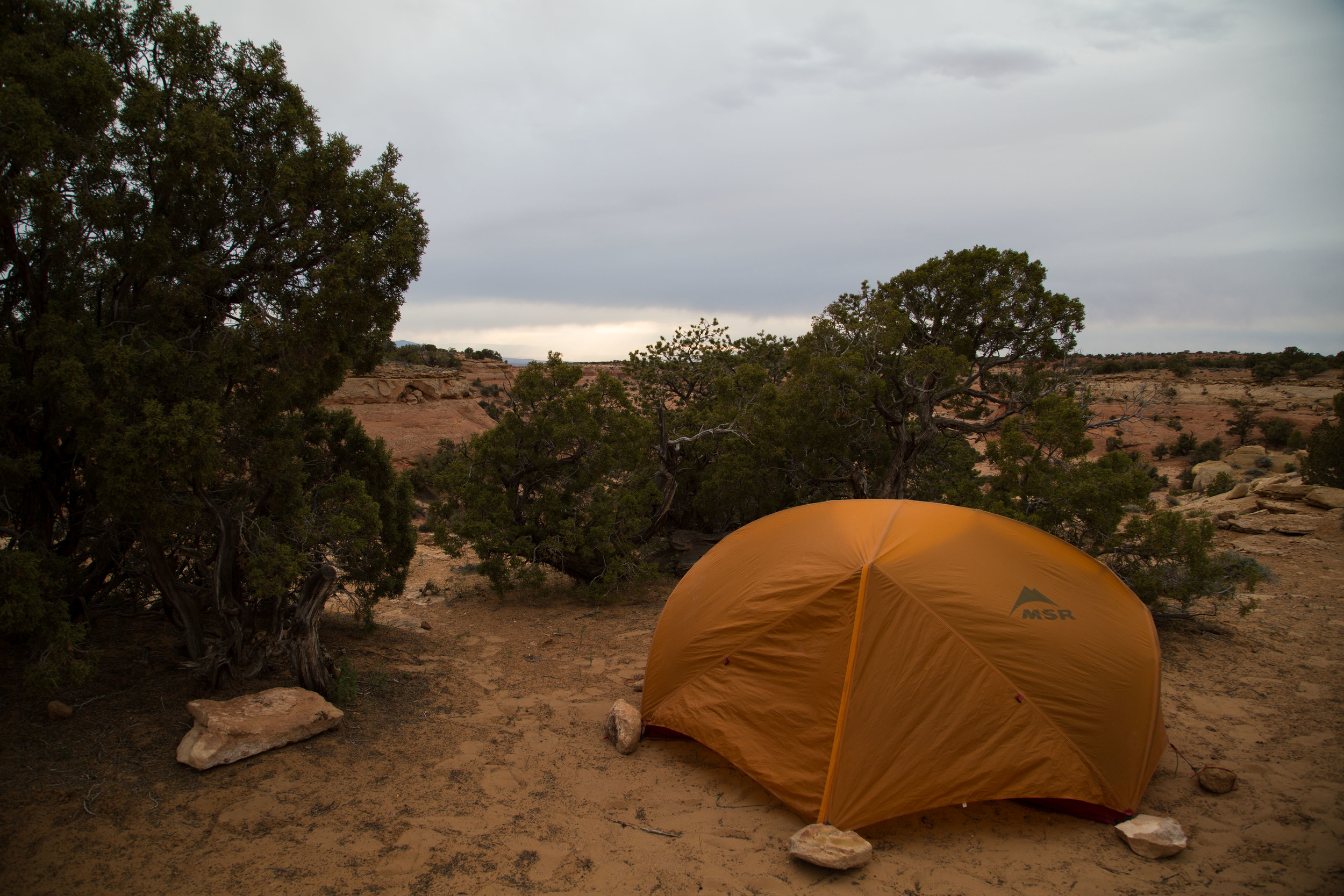I’m in water up to my chest that is a milky, greeny, brown with the consistency of gritty cowboy coffee. I’m swimming, but not by choice while, slowly, my fingers and toes go numb. My longtime friend and climbing partner Micha emailed me two months ago about exploring some of the lesser visited technical slot canyon routes in Southern Utah. And here we are: one of us soaking wet, and the other wedged between a boulder and the sandpaper textured wall of Big Spring Canyon, lowering a loop of webbing so I can aid my way out of this icy Venus flytrap of ochre sandstone. Our descent is blocked by a large pool at the bottom of the next rappel, which would be easily negotiated during the drier summer months. However, the April rains have filled the pot holes in with this uninviting liquid and our only retreat is to climb back up canyon.
We are climbing in “the maze” district behind Canyon Lands National Park. The area, made famous by the film 127 hours, is a juxtaposition of two distinctly different worlds. Above ground, the plateaus of red earth are populated with vast expanses of spiny sage brush with the odd juniper or pinyon pine poking its dark green head above sandstone bluffs ranging in colour from soft white to deep hearty reds. While below ground, centuries of water and wind erosion have carved tiny cracks in the sandstone into intricately meandering pathways. This subterranean landscape with walls sculpted into a myriad of towering fins, sharp corkscrews, and cauldrons. Changing hues of purple with ambient light trickling down from above, these slots could rival any scene created by the surrealist brain.
One fact we realize early on is that canyoneering will forever be a fringe sport and its chances of being cool or popular are very slim. The guidebook cover depicts masochistic canyon warriors clad in sweatpants, knee pads, and hats with neck flaps swimming through murky water choked with debris or rappelling with inexplicably short shorts. In the tight, muddy slots, every move is awkward, unflattering, and painful leaving knees and elbows devoid of skin. The name alone suggests it as a mandatory badge in a boy scout’s arsenal of skills.
The intense midday sun warms my chilled bones while the wind takes the moisture from my soaked clothes - which are hanging from a scraggly bush, and deposits it into the dry desert air. Within an hour Micha and I are back into another winding slot, and before long we come to our first major obstacle. It takes a few delicate steps on the sand covered rock to slide into a relatively safe position to set up the rappel. Tying a loop of webbing around a large boulder wedged between the canyon walls seems solid enough and I tenuously weight the anchor. The webbing creaks and stretches, but it holds and I look at a slot barely twelve inches across and into the blackness below. After lowering myself five meters down the rope, scraping down through the body width entrance, the slot opens up as the bottom drops out and suddenly I’m airborne, dangling from our knotted life line. The sandy canyon floor comes up quickly to meet my feet and although the sky is completely blocked out, a small trickle of ambient light highlights the smooth, featured walls.
Our knot comes free from the anchor above and the orange 7mm rope comes whizzing down and lands with a dull thud in the sand. Now, we are fully committed to completing our mission as our only way out of here is down. We are cut and bruised and can barely see each other, but as I excitedly coil our rope, the sensation of exploration guides us further.
For more images, click on the gallery below!
